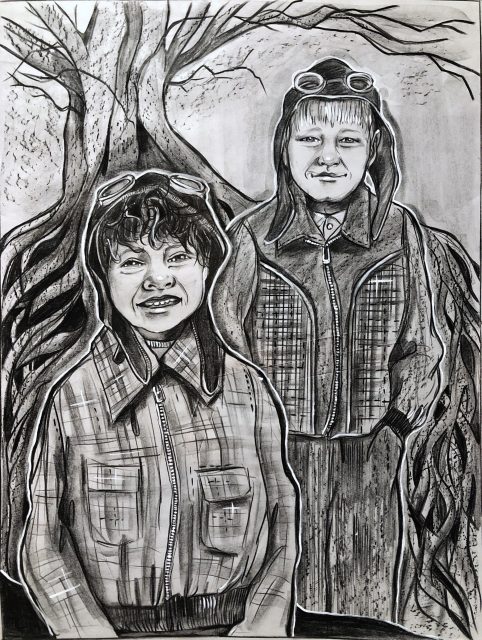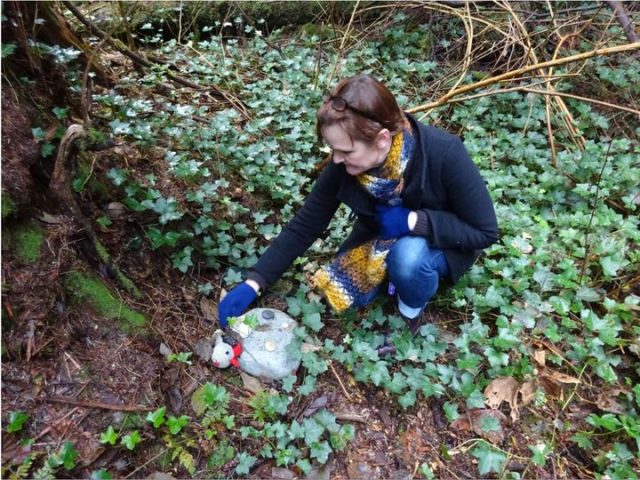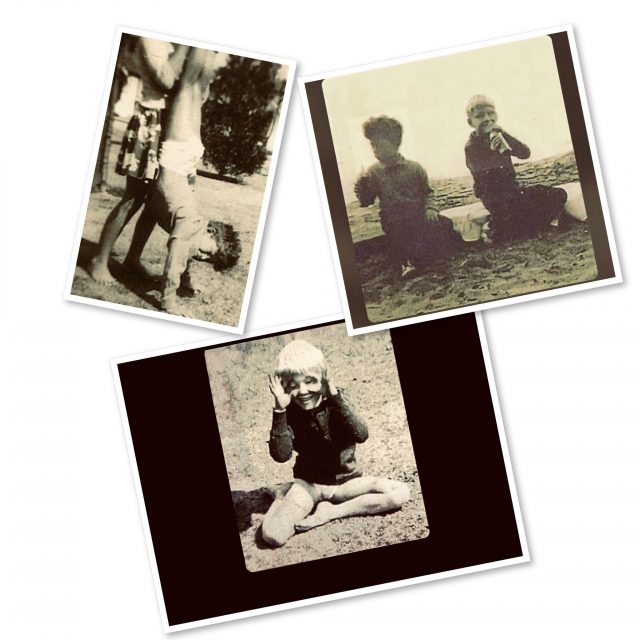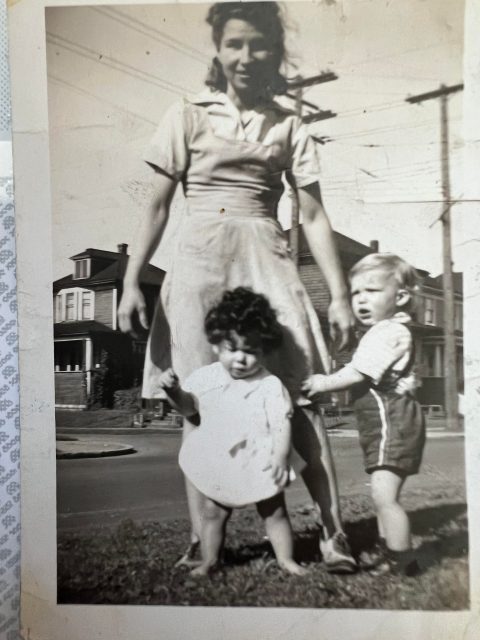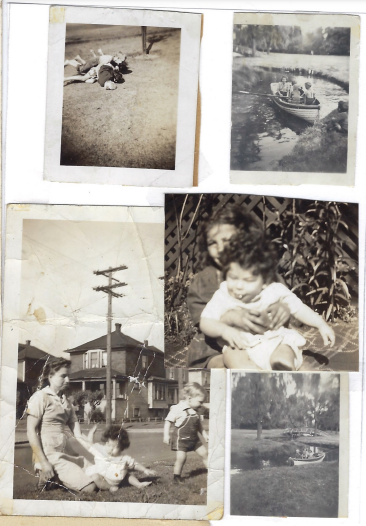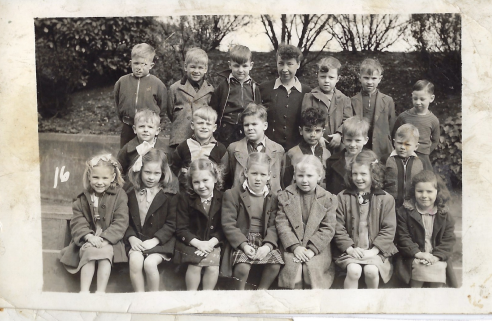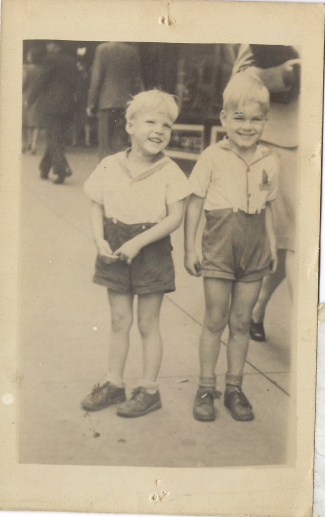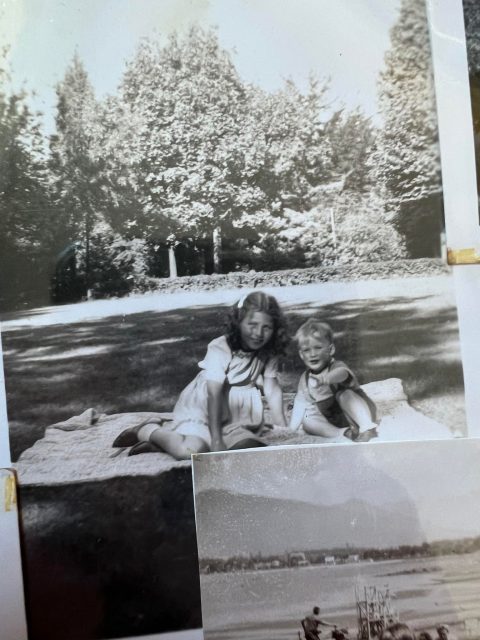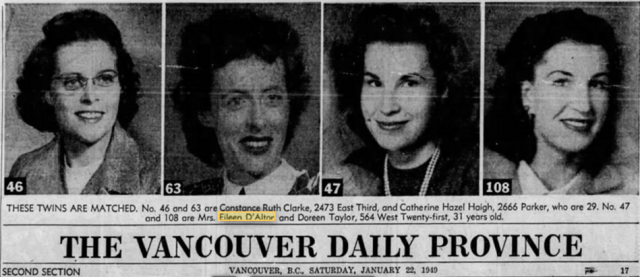Last week, I wrote a blog about the demise of Henry Hudson Elementary – the 1911 red brick building that housed generations of Vancouver school children. I asked you to share your stories, and many of you did.

Japanese Community:
Debra Kato’s grandmother (born in 1911 the same year the school opened) went to Henry Hudson Elementary with her brothers in the early 1920s. “She was one of the Japanese community that lived close by at Second and Burrard. My Grandmother’s elementary school teacher asked her and her brothers if she could give them English names. So her name, Shizue, became Alice. Her brother, Eizo, became George. Her other brother became Frank,” says Debra. “I didn’t realize that they were removing the old school. I walk by there often because I live in Kits. I will be sad when it’s finally all removed.”
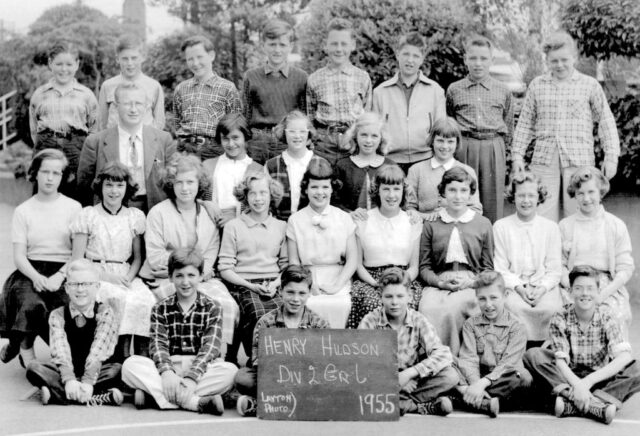
The 1950s:
Laurie Watt’s writes: “I attended Henry Hudson School for kindergarten and grades 1 and 2, 1952-1955. We lived at 1827 Whyte Avenue on Kits Point. Strong memories include watching the older boys playing marbles in circles on the playground, watching films projected onto a large screen in the gym, and seeing a firemen’s demonstration of their very long ladder placed on the south exterior wall of the school. HHS had an academic award system called HH Topper – I won an HH Topper badge in grades 1 and 2, the same years my brother Norm won it in grades 4 and 5.”
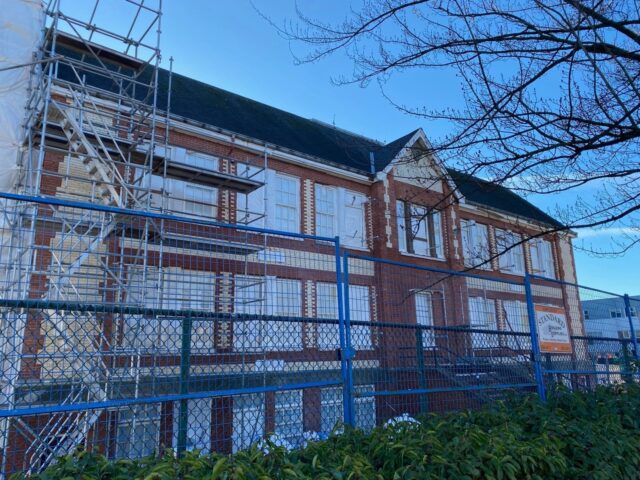
From Klint Burton: “Thank you for your blog and posts. My 76-year-old mother texted me from Gabriola Island, super early today, about 1:30 am with the message: ‘Henry Hudson is being torn down!’ My father kissed her on the Henry Hudson School playground circa 1954, both in grade 3. They married in 1966. My dad passed in 2021.”
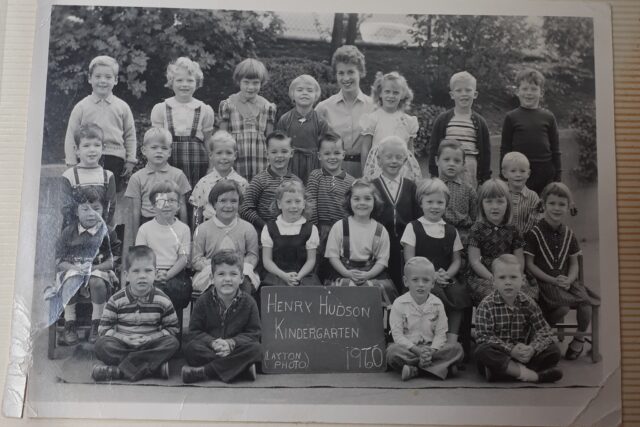
The 1960s:
Says Heather Fullager: “I went to Henry Hudson for Kindergarten in 1960. That’s me right behind the Henry in the sign and in front of the twins. My mom had already bought me a tunic to wear in preparation for grade one.”
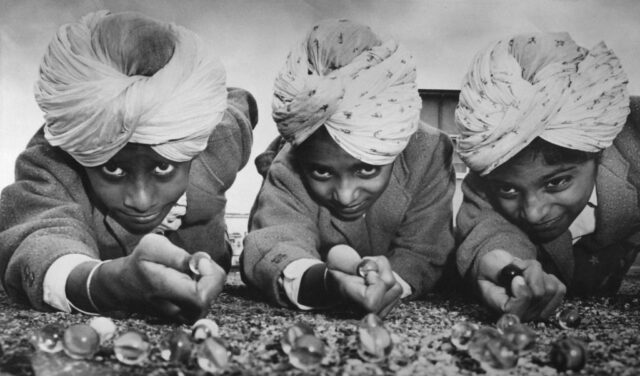
The 1970s:
“I taught Music and Grades 4 to 7 at Henry Hudson from September 1969 to June 1976. My best years of teaching – most memorable in many ways, were at Hudson. Every year we put on a school music event—Oliver, Wizard of Oz, Music Through the Decades, and all grades were involved. I am sad to see the building go—somehow bricks and mortar supply the needed ‘grounding’ for an elementary education. Memories and photos live on, thank goodness. Miss Burt/Mrs. Perdue, now Kathy Anderson.”
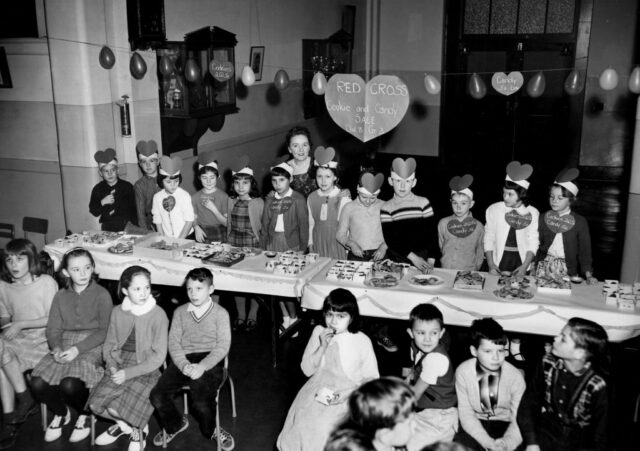
From the strap to tie-dye:
“I attended Henry Hudson from the start of kindergarten in 1965 to the end of grade 7 in 1972. At the start we had wooden desks in rows, the strap, and daily fingernail inspections. By the end we were wearing tie-dyed T-shirts and celebrating Earth Day! We had hot lunches cooked by volunteer mothers, visits by the dentist, and visits by the nurse to check us for lice. There was a girls basement and a boys basement for rainy day play. Our most beloved teacher was Miss Burt (later she became Mrs. Perdue),” says Michelle Netrval.
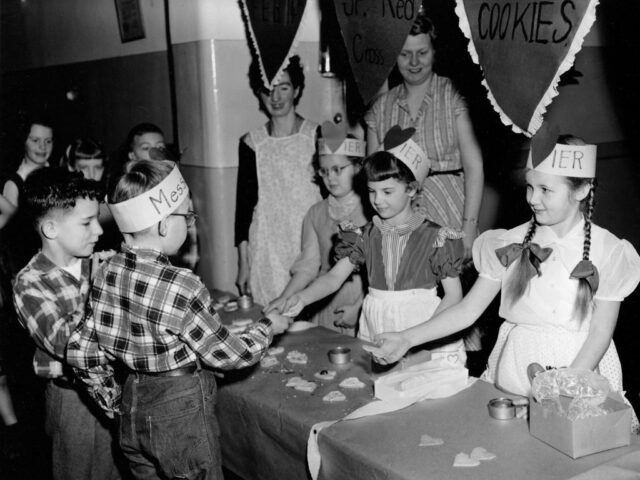
“She organized huge musical extravaganzas for us and taught us a weird little jingle to do percentages that I use to this day! In grade seven we were taught grammar by the strict librarian – we hated those classes, but she taught us so well that never again, even into university, did I ever have to pay attention to any more grammar lessons. Today I walked by the site of the school, and nothing was left but a pile of bricks. I asked a construction worker if he could bring me a brick, and he very sweetly obliged. It’s a bit misshapen and cracked and still has some mortar from 1911.”
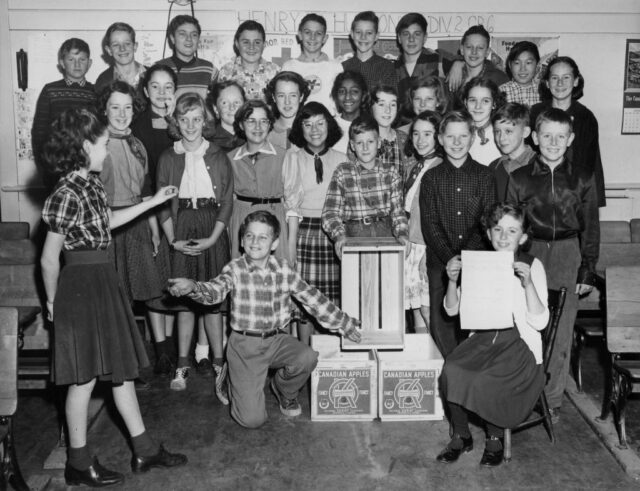
The 1980s:
Andréa Coutu writes: “The Hudson daycare was the first out of school care, formed by 1970s moms who got jobs after Molson lost a case. The City’s first hot lunch program was at Hudson, after women in the area were called to work for the war. I think it also had the first City-funded community playground, recognizing the needs of inner-city kids around 1980. The school was always very multicultural and had a wide socioeconomic profile. Many of the dock and mill workers lived in the area. The school was built on a former marsh, pond and creek and, to my understanding, was very important to the First Nations people in the area, including those forced on to a barge and left adrift in the harbour.”
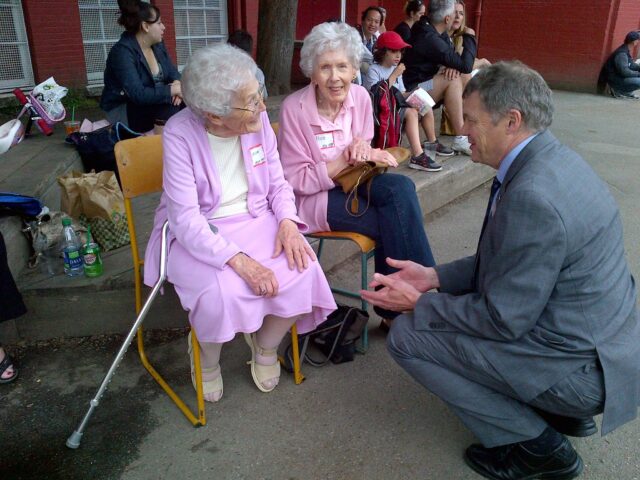
Andrea Nicholson writes: “Hudson was unique in that it was a test site for a ridiculous rubberized paint that was being tried in the USA at the time. If you notice from the (demolition photos) they are uncovering two colours of bricks which made Hudson unique. They’d been hiding behind the red rubber paint material that had stopped the ability for the building to breathe and it rotted from the inside out. Some walls were mush inside.”
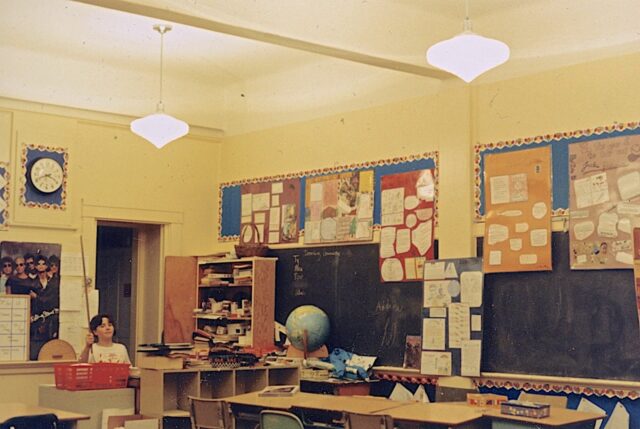
The Lights:
“Decades ago a 12-year-old boy rode on my Arbutus bus. He loved the buses and became a friend. His father was Billy Cowsill, of the Cowsills singing group from the 1960s. “The Rain, The Park and Other Things” and “Hair” were big hits,” says Angus McIntyre. “I met Billy and his mother – they lived in Kits and Del (named after Billy’s friend Del Shannon) went to Henry Hudson school. Del led a campaign to save the incandescent lights in the classrooms – they survived for a few years.”
And, it’s out with the old…
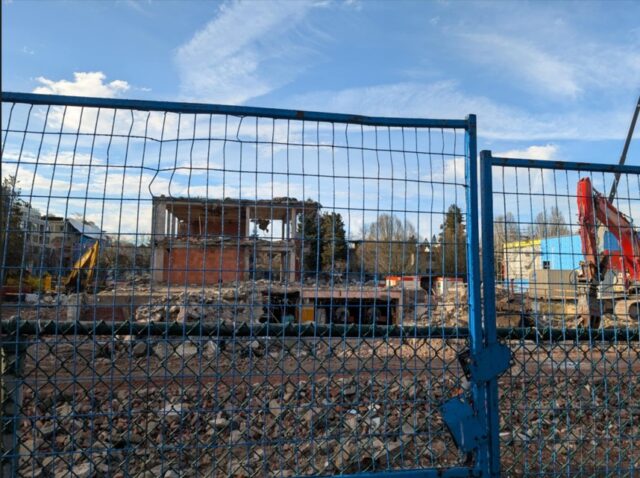
And, in with the new…..

Copies of my new book, Beneath Dark Waters: The Legacy of the Empress of Ireland Shipwreck, are available through my publisher Arsenal Pulp Press, or from any independent bookstore across Canada
Related:
NO AI TRAINING: any use of this publication to “train” generative artificial intelligence (AI) technologies to generate text is expressly prohibited. The author reserves all rights to license uses of this work for generative AI training and development of machine learning language models.
© All rights reserved. Unless otherwise indicated, all blog content copyright Eve Lazarus.










